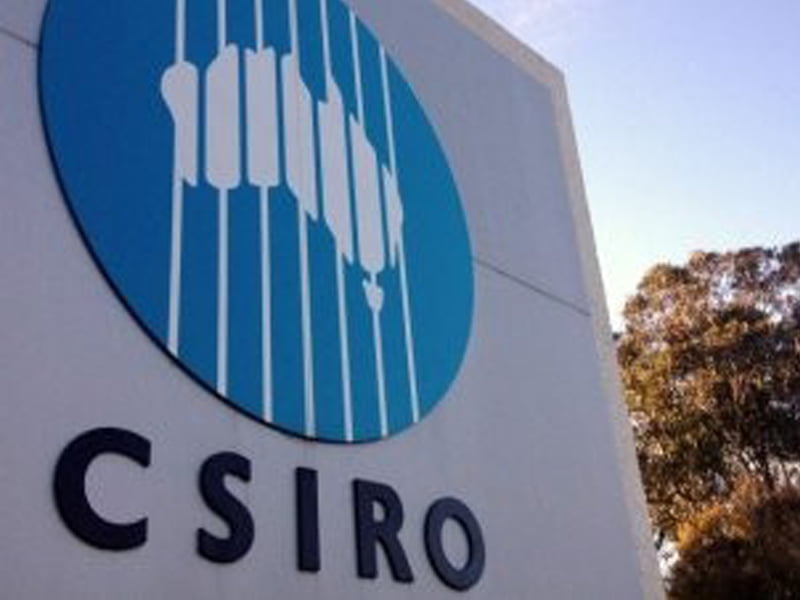CSIRO boss and former Silicon Valley denizen Larry Marshall used all his pitching powers to try and wow the troops at the National Press Club this week, revealing Australia’s home grown carbon fibre and a bold plan for hydrogen powered vehicles.
According to Dr Marshall we used to be ‘a nation of proud innovators’ – stump jump plow, anyone? – but modern comms has turned us into a nation of “proud early adopters of solutions from across the seas”.
But fear not, your CSIRO is rushing to the rescue, slide rule in hand, to save us from our own mediocrity.

Armed with the three big changes brought in at CSIRO during Dr Marshall’s rein which are speed, market vision and reinvention, the national science agency is writing a new chapter to solve the seemingly unsolvable problem of an innovation-free Australia, where only 5.5 per cent of local companies use their own new to market innovation and just 19 per cent of local firms copy someone else’s innovation.
“The rate of Australian innovation has declined consistently since the Global Financial Crisis, making us no longer an innovation leader, but an innovation follower,” Dr Marshall told the National Press Club.
“Today I want to give you a few reasons to come back to science, to feel optimistic about our future, and perhaps to even get a glimpse of these ephemeral ‘jobs of the futur’ we keep hearing about,” he said.
Dr Marshall then listed examples of good old Aussie innovation from the aerodynamic genius of the boomerang to more modern fare like Wi Fi, ultrasound imaging, and to keep the Nationals happy, self-twisting yarn machines.
CSIRO, said Dr Marshall, can do for Australia what Intel did for Silicon Valley by using speed, market vision and reinvention.
Australia throttles up its innovation speed with the help of the CSIRO led national science accelerator called ON, which has assisted more than 200 teams from 30 institutions in turning research breakthroughs into beta concepts.
Examples include FutureFeed a livestock feed supplement that’s cheap, nutritious and reduces cattle farts.
“It’s going to really help beef production and reduce our national emissions,” said Dr Marshall.
Even more speed will come from Main Sequence Ventures, the new national innovation fund partly fuelled from CSIRO’s Wi Fi patent income.
“It will support new start-ups, and existing SMEs engaged in the translation of science from all Australian Universities, once again, strengthening our national innovation ecosystem,” said Dr Marshall.
Main Sequence Ventures first investments include Q-CRTL which is developing firmware to control quantum computing; Morse Micro which is developing low-energy WiFi; Intersective which provides experiential learning to help retraining and Maxwell MRI which uses AI to detect prostate cancer.
CSIRO’s market vision sits inside the outfit’s Advanced Manufacturing Industry Roadmap and takes form in carbon fibre.
“Carbon fibre is a next generation material, delivering ultra-low weight, superb stiffness, and high conductivity,” said Dr Marshall.
“But, carbon fibre is only made by a handful of manufacturers around the world, each of whom hold their own secret, patented recipe.”
Deakin University has cooked up with CSIRO their own carbon fibre recipe and have just made their first pieces of the 21st century material from scratch, a spool of which Dr Marshall showed off to the Press Club crowd.
“The CSIRO and Deakin team has taken the first step towards reinventing generations of new jobs in carbon fibre manufacturing here in Australia,” said Dr Marshall, who went on to say that the Aussie carbon fibre recipe is “very, very different’ to anything done anywhere else in the world.”
“Our Advanced Manufacturing Industry Roadmap has mapped the path for carbon fibre in Australia over the coming years, and the future is in good shape,” said Dr Marshall who then moved on to the third CSIRO ‘big change’ under his watch – reinvention.
Reinvention comes through CSIRO’s new Future Science Platforms (FSP), according to Dr Marshall who trotted out two hitherto unknown FSPs for the National Press Club crowd.
Hydrogen Energy uses a hydrogen cracker to create hydrogen from ammonia. It means ammonia can be a fuel and CSIRO in May launched a project with BOC, Hyundai and Toyota to turn ammonia into fuel for cars.
The ghost of former Queensland Premier Joh Bjelke Petersen would be well pleased that his hydrogen car flirtation from 1980 is finally catching on.
The second FSP is Precision Health which has developed software tools to forecast demand for health services. These tools are rolling out in Queensland hospitals.
“The tools have 90 per cent accuracy, and if the entire country used the tool, we could save a huge $23 million from the health budget every year,” Dr Marshall said. These two FSPS have mopped up $5 million in funding.
Do you know more? Contact James Riley via Email.

